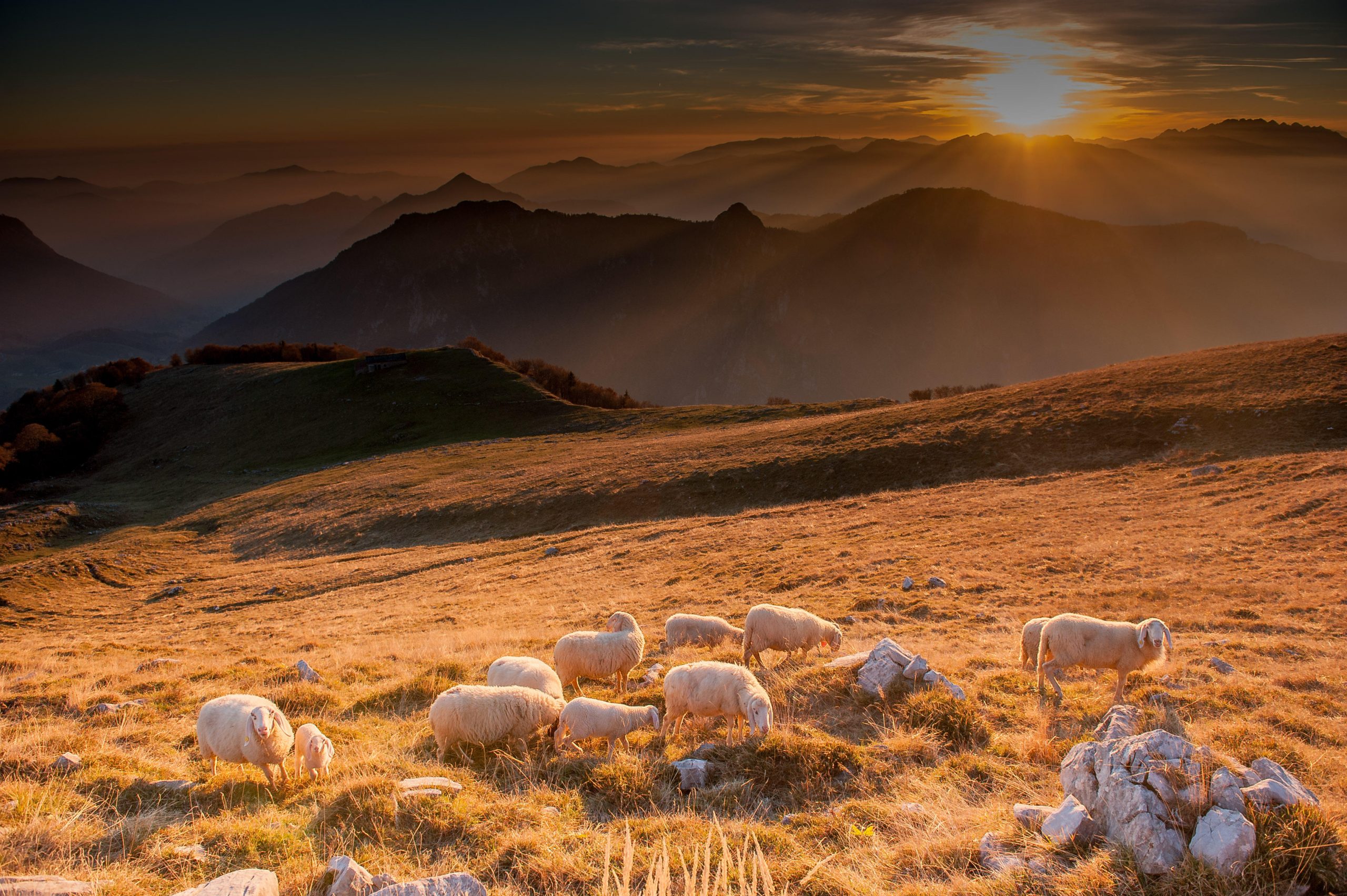John Lewis-Stempel: Here’s looking at ewe, kid
Tasked with shearing his neighbour’s sheep late on a warm June night, the clickety-click of John Lewis-Stempel’s metal hand-shears is accompanied by a vociferous twilight chorus of crickets, birds and bats.


I stopped by the copse, where the track enters the trees, on the lightest evening of the year. Even at 10pm, I could see clear across the quiet valley, the breeze stirring the creamy barley and the thirsty brown cattle drinking from the trough in the meadow. The hay had just been cut, the bales stacked in towers, and the mown ground glowed, as if lit from underneath. Getting out of the car, the pale sky was gentle and warm and it seemed to me then that winter never had been and never would be again.
In the perpetual twilight of midsummer, the shadows of the four black sheep shifted restlessly in their pen under the vergeside oak. Disturbed by my arrival, a tawny owl flew out of the tree and looked at me quizzically with its heart-shaped face. I was late, but I had a commitment to keep. My neighbour, who is of a certain vintage, had asked if I could shear her four sheep. They had been troubled by the heat and the professional shearer she had booked had postponed.
From the boot of the car, I took a plywood board, a yard square. And a pair of metal hand-shears. It had not seemed worth the trouble of lugging up a generator for the Lister electric shears. Not for four sheep.
I set down the board on the grass of the verge away from the oak and the grass whispered under the weight of the descending wood. There was no other noise, except for the clickety-click of crickets’ song — their rhythmic chanting seemed a sort of cheerleading. The metal bars of the small pen had retained the heat of the day and were sultry on my hand. I opened the gate and pulled the first ewe out. The spiral horns of the Hebridean are a butting bane, but, equally, they are useful handles in handling.
In the half-light, I sat the little ewe down on her rump on the board, against my legs, snipped down her front, around her neck, then leant her over slightly to begin the shearing of her back. The shears went clickety-click in unison with the song of the crickets. My sweeping forearm and the shears became one thing and the fleece lifted like scythed foam. The lanolin in the ewe’s black wool glittered as bright as polish. My arrival must have surprised and suppressed the birds of the dark wood, for they now started calling, despite the lateness of the hour. They were song thrush, robin, willow warbler and wren, and pleasant in their polyphony.
"The noctules were so close and the dreamy midsummer night so still, that I — for the first time in more than 30 years — heard the talking of the bats"
When I finished the little ewe, I put her in the field, but she hung around, as close to the others as she could. I started on ewe number two and the shears were flashing. In the dreamy demi-light, the glorious smell of wool lifted on the air — and I recalled childhood seaside holidays in Ceredigion wearing hand-knitted jumpers, the rain in italic script. And my father’s beige gardening cardigan, with its elbow patches and pocket of pipe tobacco. By ewe three, I was sweating and my back ached. And I recalled I had a generator and electric shears. I began shuffling around on the board; the shuffle and drum of my feet added to the twilight sound of the clickety-click of the shears and the crickets and the nocturnes of the birds. But my hands were baby-soft due to the buttery lanolin in the deep-black fleeces.
I looked up at the silver dome of the sky; one or two stars had turned on and there was a slip of moon rising over the blue hills. The white flowers of the wild rose in the rambling hedge behind me were my torches. In the owl-light, the tawny flew back to the tree and scowled at me from behind the clotted leaves. I was halfway down the back of ewe three when my eyes bleared with sweat and I started shearing by feel, following the warm topography of the ewe’s body, the mountain ridge of the spine, the fat valley slope of the belly.
Exquisite houses, the beauty of Nature, and how to get the most from your life, straight to your inbox.
It felt authentic and I remembered a visit to an ancient shearing barn on a Welsh mountainside, where the men had sat to shear in stalls in gloom. Half-blinded, they, too, must have been guided by the sense of touch, as well as of sight.
The little ewe relaxed in my hands. The clickety-click of the hand shears was hypnotising in a way that the brutal buzz of the Listers never would be.
White moths swirled around my head; down after the moths came noctule bats, as big as birds, swooping with the speed of stone; the displaced air from the bats’ leathery wings fanned my face. But it was not enough; by ewe four, the great phrase of farming was looping in my head: will I finish it or will it finish me?
The crickets sang clickety-click as staunchly as ever. The clickety-click of the shears persisted. And then I detected the clickety-click of the bats. To hear the echolocation sound of bats, on 20kHz–45kHz, is usually the privilege of children, denied to the coarsened ears of adults. I suppose, because the noctules were so close and the dreamy midsummer night so still, that I — for the first time in more than 30 years — heard the talking of the bats.
John Lewis-Stempel has twice been crowned victor of the Wainwright Prize for Nature writing, for ‘Where Poppies Blow’ and ‘Meadowland’. His latest bestselling book, ‘Woodston: The Biography of an English Farm’, was published last year (Doubleday, £20)

Credit: Philip Bannister / Country Life
The extraordinary writing which made John Lewis-Stempel Columnist of the Year
Read three of the beautiful, evocative articles which made Country Life's John Lewis-Stempel the Columnist of the Year.

Hibernation: How it works, why animals do it, and the creature that can sleep for up to 11 months
Dormice sleep for months, hedgehogs snore in quilts of moss and wood frogs turn to ice — a spellbound John Lewis-Stempel

The secret life of chickens: It turns out the humble pecker is something of an egghead
Assumed to be the lowest in the avian-intelligence pecking order, chickens are, in fact, more like feathered imitators of Sherlock
